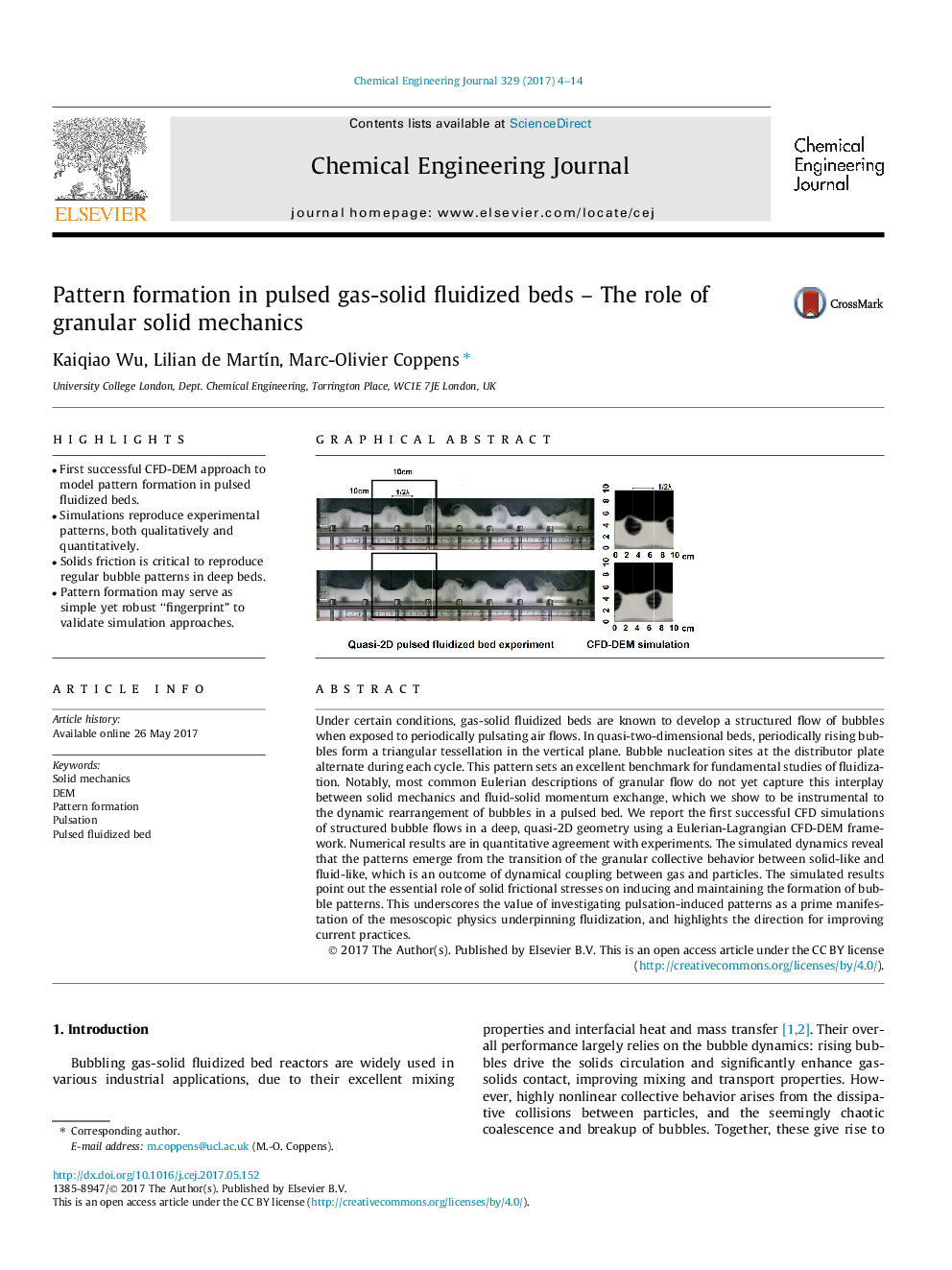| Article ID | Journal | Published Year | Pages | File Type |
|---|---|---|---|---|
| 6465379 | Chemical Engineering Journal | 2017 | 11 Pages |
â¢First successful CFD-DEM approach to model pattern formation in pulsed fluidized beds.â¢Simulations reproduce experimental patterns, both qualitatively and quantitatively.â¢Solids friction is critical to reproduce regular bubble patterns in deep beds.â¢Pattern formation may serve as simple yet robust “fingerprint” to validate simulation approaches.
Under certain conditions, gas-solid fluidized beds are known to develop a structured flow of bubbles when exposed to periodically pulsating air flows. In quasi-two-dimensional beds, periodically rising bubbles form a triangular tessellation in the vertical plane. Bubble nucleation sites at the distributor plate alternate during each cycle. This pattern sets an excellent benchmark for fundamental studies of fluidization. Notably, most common Eulerian descriptions of granular flow do not yet capture this interplay between solid mechanics and fluid-solid momentum exchange, which we show to be instrumental to the dynamic rearrangement of bubbles in a pulsed bed. We report the first successful CFD simulations of structured bubble flows in a deep, quasi-2D geometry using a Eulerian-Lagrangian CFD-DEM framework. Numerical results are in quantitative agreement with experiments. The simulated dynamics reveal that the patterns emerge from the transition of the granular collective behavior between solid-like and fluid-like, which is an outcome of dynamical coupling between gas and particles. The simulated results point out the essential role of solid frictional stresses on inducing and maintaining the formation of bubble patterns. This underscores the value of investigating pulsation-induced patterns as a prime manifestation of the mesoscopic physics underpinning fluidization, and highlights the direction for improving current practices.
Graphical abstractDownload high-res image (208KB)Download full-size image
